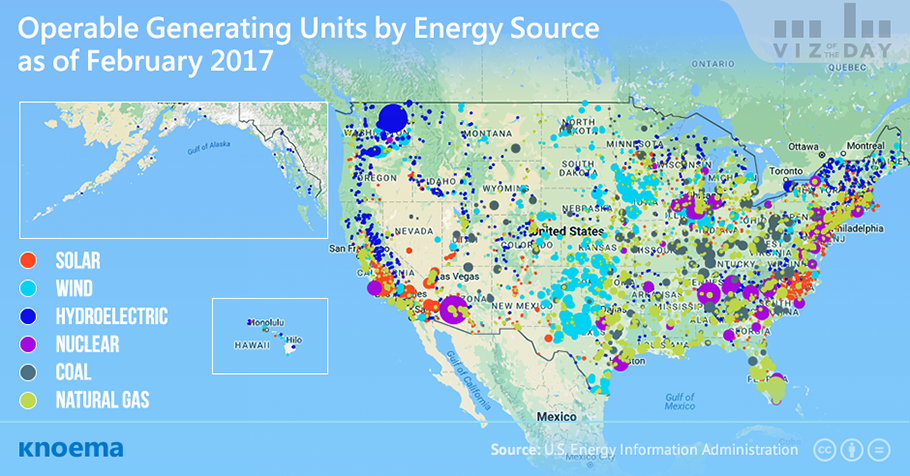An extended crisis in the US coal industry and ecological concerns surrounding energy generation are important contributors to the phenomenal growth in solar power generation capacity in the US during the last decade. Net solar electricity generation has increased by 7,135 percent, from about 508,000 MWh in 2006 to 36.8 million MWh in 2016.
- The average growth rate for solar power generation capacity was about 73 percent per year between 2010 and 2016, a significantly higher rate than other electricity generation technologies. The rate has slowed, however, during the last three years, increasing by 46 percent from January 2016 to January 2017, according to US Energy Information Administration (EIA).
- Last year, California led the nation in new solar capacity generation, while Minnesota was the top state by new solar capacity as a share of pre-2016 capacity.
- Even some US-based coal companies are now turning to solar, transforming coal real estate into solar farms and publicly promoting the job growth the strategy promises for communities that have suffered during the decline of US coal production.
Today, the combined net electricity generation capacity of the country’s 2,000 solar power plants is just 2 percent of the national total, and just 1 percent of the United State's total electricity generation. So, what do energy authorities expect from this industry going forward?
- During 2017, US solar power generation is expected to grow at a slightly lower rate than in 2016 at about 37 percent, according to the EIA Short Term Energy Outlook published this month. Even so, the US appears to be on track to reach a record output level of 189.83 GWh per day next month.
- The IEA World Energy Outlook 2016 offers three scenarios for US solar energy generation growth over the long term through 2040. According to the most optimistic scenario—the “450 Scenario”—US solar electricity generation in 2040 will be about 575 TWh, a level almost equal to the net electricity generation from all US renewable sources in 2016.
Материалы по теме
BP Energy Production Forecast
Energy Production Forecast | Energy Consumption Forecast Source: BP Energy Outlook 2035, February 2015
BP Energy Outlook 2035
According to the new BP Energy Outlook report, despite the dramatic recent weakening in global energy markets, ongoing economic expansion in Asia – particularly in China and India – will drive continued growth in the world’s demand for energy over the next 20 years. Global demand for energy is expected to rise by 32% from 2015 to 2035, or by an average of 1.2% a year. The renewables and biofuels will be the fastest growing energy sectors next 20 years in relative terms. As expected by BP, the overall growth of the demand for renewables from 2015 to 2035 will be about 240% and 93% for biofuels. By 2020, the United States will become net...
Renewable Energy
Renewable energy resources have increasingly become mainstream sources of energy worldwide, catapulted by new capacity in developing countries. Depending on the source, renewable energy has or is poised to surpass coal to become the world's largest source of electrical power capacity. The International Energy Agency (IEA) in its most recent medium-term renewable market report said that this transition occurred last year, while according to the latest energy outlook by the US Energy Information Administration (EIA) the transition will be completed in 2016.The IEA report shows that in 2015 renewables contributed more than half of the growth of...
